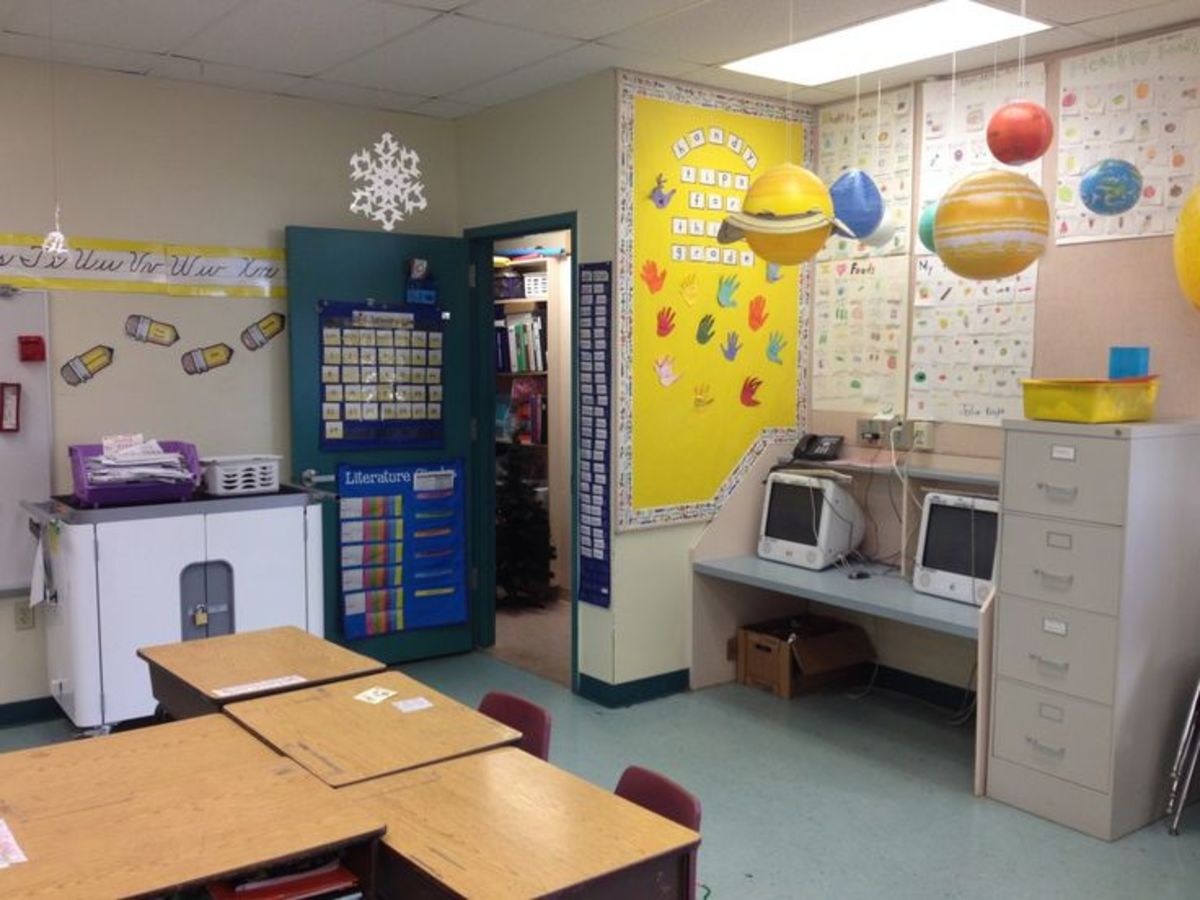How to Encourage Middle and High School Students to Read More
A Reading Program That Works
As an English teacher, I am naturally drawn to reading. I have always struggled with encouraging students to read, especially at the middle and high school level. We all know the benefits of reading, but it's difficult to convince a student that reading is just as important as track practice or the school dance and that it can be just as fun. Through trial and error, I have been able to implement a program in my classroom that has my students reading.
My requirements for what I call "Independent Reading" were initially minimal. Due to the fact that many of my students simply don't read leisurely, I gave then an assignment to read one book per quarter. Students had to find and show me a book and once I approved it, fill out a book plan with reading goals set for each week during the course of the quarter. Once they submitted this Book Plan, students could then participate in all of the reading tracking assignments as well as the book project.
The Book Plan was the golden ticket. This book would represent the book that my students had to do their final, quarterly book project on and would at least ensure they had a book to read throughout the quarter.
To make sure my students were reading throughout the quarter, they completed weekly reading tracking assignments. Every Monday students received a Vocabulary Worksheet that was due at the end of the wek. On it, students identify two words that were unfamiliar to them or used in an unfamiliar context. They document the page in the reading it was found on, the sentence, the definition they've looked up that fits the context of the word, a new sentence containing the word used correctly, and a picture to help them remember what the word means.
Students also would fill out an Independent Book Response (IBR) every Friday based on the reading they had done that week. On an IBR students write down the title, author and page number of the book they are currently reading. Each IBR has a few questions about the reading. For examples, one week might ask "What character would you give advice to? What would that advice be? Why would you give that advice? If the character took your advice, how would it change the plot, or predict what would happen." Another week might be about the setting or the conflict. Students are required to write a response that uses specific information from their reading to support their answers.
The program initially got my students reading, but because not all students consider themselves non-readers, I had a difficult time with what to do with students who would finish their quarterly book in the course of a week or so. I felt I was discouraging them from reading more because it "didn't count" towards their book projects. Ultimately, I was able to finally come up with a plan that works well and encourages all students to read more.
Last fall I had an opportunity to go to a conference to see Donalyn Miller, author of The Book Whisperer: Awakening the Inner Reader in Every Child. Essentially, she developed a reading program that got her students reading. I was skeptical at first, but I knew I had to figure out a way to overhaul my program. Using bits and pieces of Donalyn Miller's program, I have successfully transformed my classroom of non-readers into readers.
I wanted to hold onto the idea of my quarterly book projects, so students still choose one book per quarter to read, fill out a book plan and complete a book project at the end of the quarter based on that book. Students can choose any book, as long as it's approved by me. I encourage students to read what interests them. The assignment is more for the reading than it is for my students to read "classically." So while I have had a student read Les Miserables this quarter and two students read The Catcher in the Rye, I am just as satisfied when a student comes to me and shows me The Hunger Games or in the case of my middle school students, any of the books from the Harry Potter series. The projects stay the same, usually a list with options such as an interview with a character, a college application of a character, a found poem based on the conflict of the story, etc. I try to keep the project creative, giving options to appeal to all students and learning styles.
Students also track their reading in a log (Literature Log), listing the title, author, setting, main characters, themes and brief plot summary. Each book they finish, they document on a literature log.
Donalyn Miller talked about having a wall in her room that she covered with paper and had students write quotes from the books they read on it. I wanted to implement this idea in my classroom, so instead of having a large piece of paper taped to the wall, I have my students write the title, author, quote and a rating out of five stars on a small piece of construction paper and call it a Reading Wall Entry.
I am not a strong believer in giving extra credit; most students want it when they haven't done their work to begin with so I never give any out. I decided to make an exception with book reading. I challenged my students to read more this year than any year before and for every book they read beyond their book project book, they could get extra credit for it. The books would have to be approved by me and to get credit, the students have to document the books in their Literature Log and make a Reading Wall entry.
To make it even more exciting, I turned it into a competition. First, it would be an individual competition. If a student read 25 books in the course of the year, I would get this a prize. For every 20 books after that, I would get them another prize. The other competition was between classes and the class that read the most books at the end of the year would get a party. The only requirement was that each students had to exceed the mandatory 4 books read in order to qualify (each student in the class would have to read 5 books).
If a student chooses a book that is 400+ pages, I count it as two books. I still do IBRs and Vocabulary Worksheets, on now when a student completes the IBRs and Vocabulary Worksheets, he/she does it on the book he or she is currently reading. Previously, students would have to think back to the book they finished weeks prior. Now students are encouraged to pick up another book and keep reading.
I have already had two students read 45+ books in the two quarters since I began the competition. More than half of my students have read the required 5 books at this point as well. Students walk into my room and stop by the reading wall to read all of the quotes. I track the books read on a sticker chart in the front of my room (who would have guessed how positively high school students embrace a sticker chart) and students love to see how their competition is doing.
I think through all of this, my largest success would be my two students that refused to do anything in class, much less be caught reading a book outside of class. I consulted with them about topics they were interested in and located a few books they requested. One of them finished his 400+ book in less than two days, carrying it with him to all of his classes and even getting it taken away for reading during Spanish class! He went on to read another book in just as short of time. The other student wasn't as easy, but eventually he read through The Hunger Games and told me he "didn't hate it." I was elated at the progress that these two students made because we were able to find books that interested them and because I was able to create a pro-reading atmosphere in my classroom.
As we're heading into fourth quarter, my students have filled the entire front wall of my classroom with small 4x6 pieces of construction paper. I haven't done a full count of the books that they have finished, but I did hang up over 90 reading wall entries last week when I collected book projects. The wall is becoming a bit of a spectacle, but they are so proud of all of the reading they have done and I am proud of them too. Students come in with piles of books for approval so they can get to reading them. Most of my students carry their books around with them and sneak in a few pages before the bell rings. I like to think that I've lit a spark in my students and can only hope it grows stronger and brighter as time progresses. If anything, I hope that I have made reading fun for them and a habit that will stick with them after they leave me.






